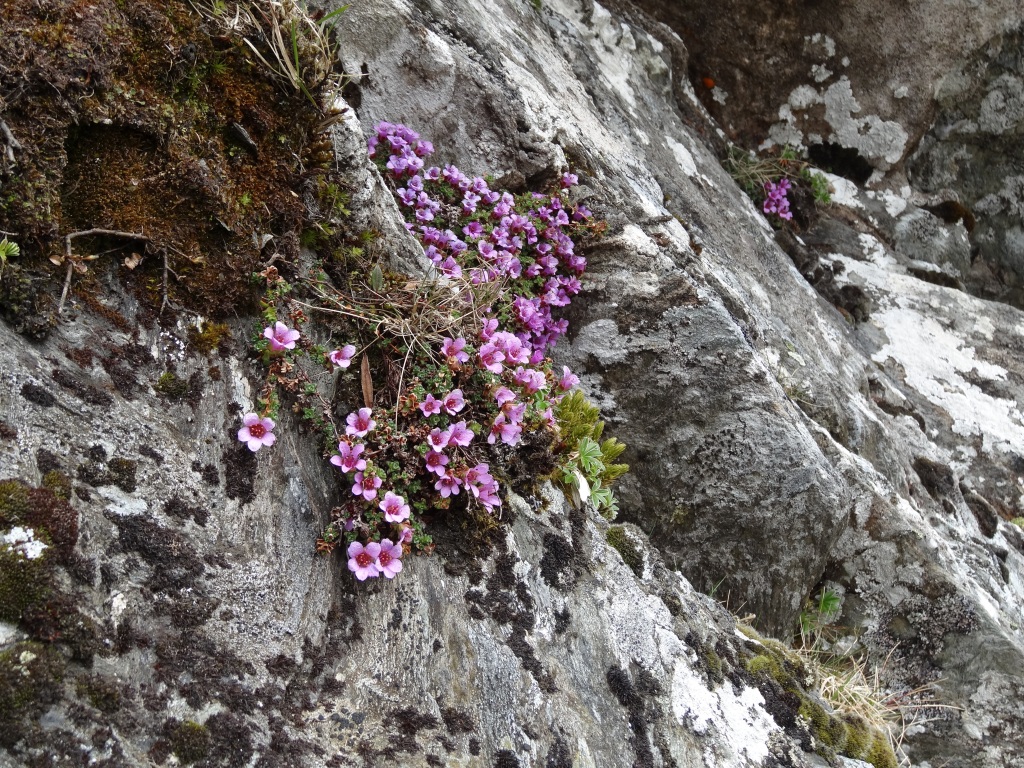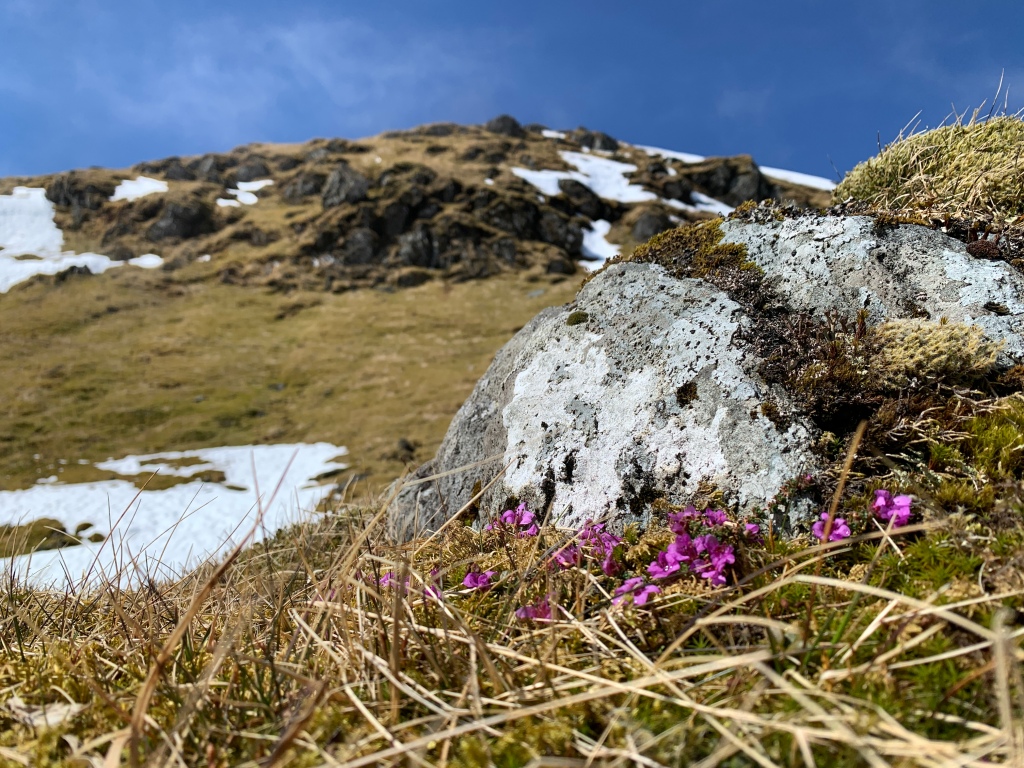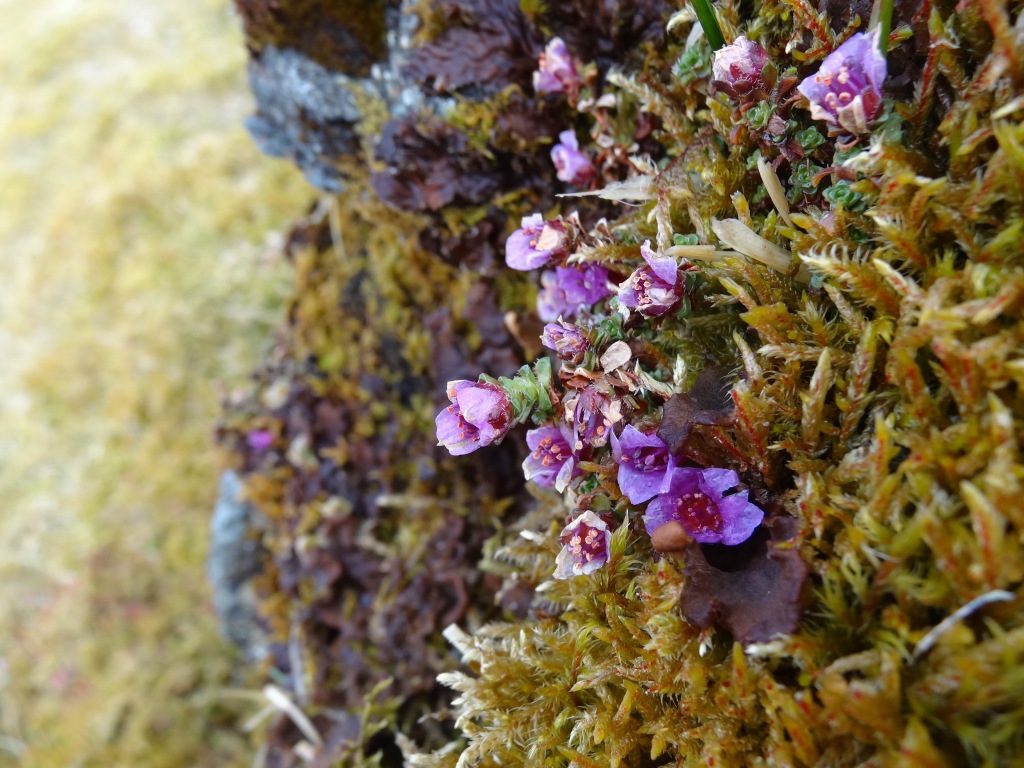At this time of year I try to make a trip to Perthshire’s Ben Vrackie. Truth be told it’s a fairly unspectacular mountain. Neither too long or difficult a climb, occasionally a wee bit busy, it fits the bill for a short day rather than an epic outing amongst the hills. Nonetheless, it has a ‘hidden’ allure that belies its familiarity. It offers beautiful views, and, here’s the clincher, it’s a great place to see purple saxifrage.

Purple saxifrage (Saxifraga oppositifolia) is a good indicator that spring is rolling in. It also has that ‘Location, Location, Location’ appeal. Given its preference for the uplands it connects with hill-walkers in the same way that a glimpse of other mountain specialists such as golden eagles, dotterel or dashing mountain hares lift the spirits.
With tightly-knit rosettes of small, vivid pinky-purple flowers, purple saxifrage is a prostrate beauty which can add a splash of dense and welcome colour to what are often otherwise monochrome days.
It’s a tough wee critter too. Those purple flowers, each with five petals, withstand punishing conditions from perishing sub-zero temperatures to howling gales.
That hardy quality means this is truly a plant at home in the mountains. You will find it in some of the coldest areas of Northern Europe and beyond. Apparently, it has been recorded at 4,500 metres in the Swiss Alps.

This begs a question. ‘How does a plant which emerges before the bulk of our pollinating insects achieve pollination in such a forbidding setting?’
The answer lies with flies. Not those mesmerising, boldly coloured, hoverflies which we often see in our parks and gardens, but rather in ordinary looking dull black flies related to house flies.
In mountain situations, above the altitude where heather is abundant, and in more northern parts of the world these types of flies are often successful pollinators.
The combination of cool, windy weather and a relatively low number of flowering plants creates a difficult environment for bees which have a relatively high energy requirement for themselves and their brood. And bees which favour higher ground, such as monitcola, are still in hibernation come early spring.
On the other hand, many of our upland-based flies over-winter as adults in sheltered spots amongst nooks and crannies in rocks. From there they can dash from their ‘cosy’ resting state relatively quickly if the weather warms up just a little. Thus they are on the wing before bees emerge, and they rely on the likes of early flowering saxifrages as a nectar source.

In an environment where the weather is often highly changeable these pollinating flies also ride out bad weather by retreating and finding temporary shelter. Thank goodness they do, for we depend on these little, rather obscure, insects to pollinate many of our specialised mountain plants, including our beautiful purple saxifrage.
The appeal of purple saxifrage is widespread. Not only is it admired in the far north of Europe and the Alps, it’s the national flower of Nunavut, a huge northern territory in Canada. Closer to home, there is a record showing it spotted at 1,210 m on Ben Lawers and I once read an update celebrating that it had been found flowering on Snowdon on 26 January. Amongst Yorkshire walkers, purple saxifrage can enliven a spring trip to Pen-y-ghent or Ingleborough. Dip into the Cairngorm Club journals and mentions of purples saxifrage are not hard to find.
Scotland is the British stronghold for this botanical gem. Draw a line on a map, roughly from Greenock to Brechin, and north-west of that line you’ll find plenty of places to see purple saxifrage. Luckily for me Ben Vrackie is one of them, and it’s an annual delight to see this spectacular and hardy little plant confirm that spring is here again.
Find out more:
Botanical Society of Britain and Ireland on purple saxifrage
